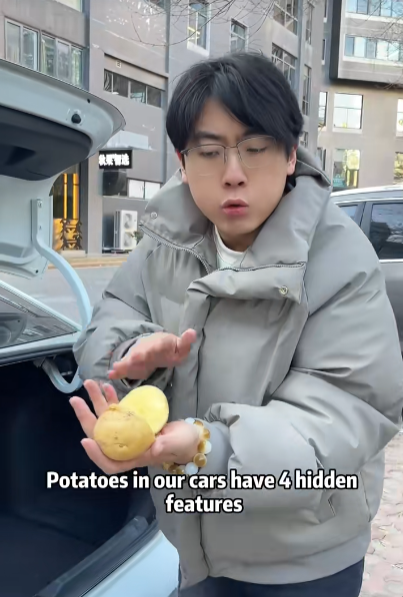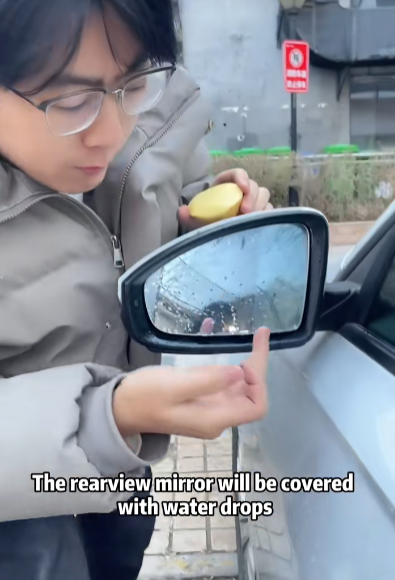
At first glance, the idea of potatoes having anything to do with cars might sound like a quirky internet myth or a creative joke. But what if we told you that this humble root vegetable—so commonly found in kitchens—has some surprising and even “magical” powers when it comes to automobiles? From alternative energy to quirky hacks, potatoes have more to do with cars than you might think. Let’s dig in.

1. Potatoes and Biofuel: An Unexpected Power Source
Perhaps the most impressive link between potatoes and cars lies in biofuel. In recent years, researchers and engineers have been exploring renewable energy sources to replace fossil fuels. Among the candidates, potatoes have made a surprising appearance.
How does it work? Potatoes, rich in starch, can be fermented and converted into ethanol—a type of alcohol that can be used as a fuel. Ethanol is already used in many parts of the world as a fuel additive or even as a main fuel source in flex-fuel vehicles. In countries like Brazil, ethanol produced from sugarcane powers millions of cars. Similarly, potatoes can be processed in a way that extracts starch and turns it into sugar, which then ferments into alcohol and finally becomes fuel.
In fact, scientists in countries with large potato crops, such as Poland and parts of the United States, have looked into this method as a way to reduce waste and cut down on pollution. Unsellable or surplus potatoes—those that are too small, oddly shaped, or otherwise unfit for supermarket shelves—can be put to good use in biofuel production. That means instead of rotting in a landfill, these spuds could be powering your next road trip!

2. Potato Battery: A Fun Demonstration of Power
While you probably won’t be powering a car with a single potato anytime soon, potatoes do have the ability to generate electricity—on a small scale. You may have seen or tried the classic school science project where a potato, combined with a zinc nail and a copper coin, creates a basic battery.
The science is simple: potatoes contain phosphoric acid, which acts as an electrolyte. When the zinc and copper electrodes are inserted, a chemical reaction occurs that generates a small electric current. This current is enough to power a small LED light or a digital clock.
Now, scale that up to thousands or even millions of potatoes, and in theory, you could power something much larger. While it wouldn’t be efficient or practical to power a car this way, the concept is fascinating—and it opens doors to future innovations in alternative energy sources.
3. Anti-Fog Trick with a Potato
Let’s step away from science and step into something more practical—and even a little magical. One of the coolest car hacks using a potato has to do with preventing foggy windows.
Here’s how it works:
- Cut a raw potato in half.
- Rub the cut side of the potato onto your windshield or windows, creating a thin layer of starch.
- Let it dry or wipe gently with a clean cloth.
The result? A protective coating that helps prevent fog from forming on the inside of your windshield. The potato starch creates a thin, invisible barrier that reduces the condensation caused by temperature differences inside and outside your car.
This hack is especially useful in the winter months or on rainy days when visibility becomes a safety concern. It’s natural, cheap, and surprisingly effective.

4. Temporary Headlight Fix
Here’s another fun potato trick: if your car’s headlights are cloudy or foggy, rubbing them with a cut potato can help.
Just like with the windshield, the starch in the potato can temporarily clear up the fogginess and improve visibility. Of course, this isn’t a permanent solution like polishing kits or professional cleaning, but it’s a handy emergency fix that can buy you some time—especially on long trips.
5. Rust Prevention on Chrome
Some car parts, like chrome bumpers and trims, are prone to rust over time. Guess what? A raw potato can help with that too.
Slice a potato in half and rub it over the chrome surface. The oxalic acid in the potato helps dissolve rust and leaves behind a mild shine. It’s not a replacement for commercial rust removers, but it’s a useful trick for minor spots or for maintaining your vehicle’s appearance with natural products.
6. A Symbol of Sustainable Farming and Transportation
Beyond practical uses, the relationship between potatoes and cars also touches on sustainability. As we move toward a future where eco-friendliness is a must, the potato becomes more than just a food—it becomes a symbol of how everyday items can be part of global solutions.
Sustainable farming, reducing food waste, and finding creative ways to power vehicles all tie together. Imagine a world where farmers grow potatoes not just to feed people but also to help fuel cars. That circular system, where nothing goes to waste, is exactly the kind of future the planet needs.

7. So, Can You Really Drive a Car on Potatoes?
The honest answer is: not directly. You won’t be stuffing raw potatoes into your gas tank anytime soon. But thanks to science and innovation, processed potatoes can contribute to vehicle energy. Whether through ethanol production or as part of hybrid fuel systems, the potato is proving its worth in more ways than just being mashed or fried.
What makes this idea magical isn’t just the quirky novelty—it’s the potential. The idea that something so simple and ordinary can play a role in our high-tech, fast-moving world is inspiring.
Conclusion: The Potato’s Surprising Role in Modern Cars
Who would have thought the potato could do so much? While it won’t replace gasoline entirely, the potato does offer some surprising benefits when it comes to cars—from renewable fuel possibilities to practical hacks and even environmental solutions.
So next time you look at a potato, don’t just think “french fries”—think fuel, fog prevention, and eco-friendly innovation. The potato might not be a magic wand, but in the world of cars, it sure has a few tricks up its sleeve.



